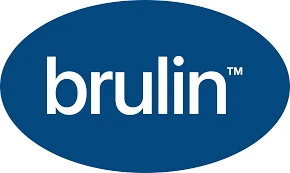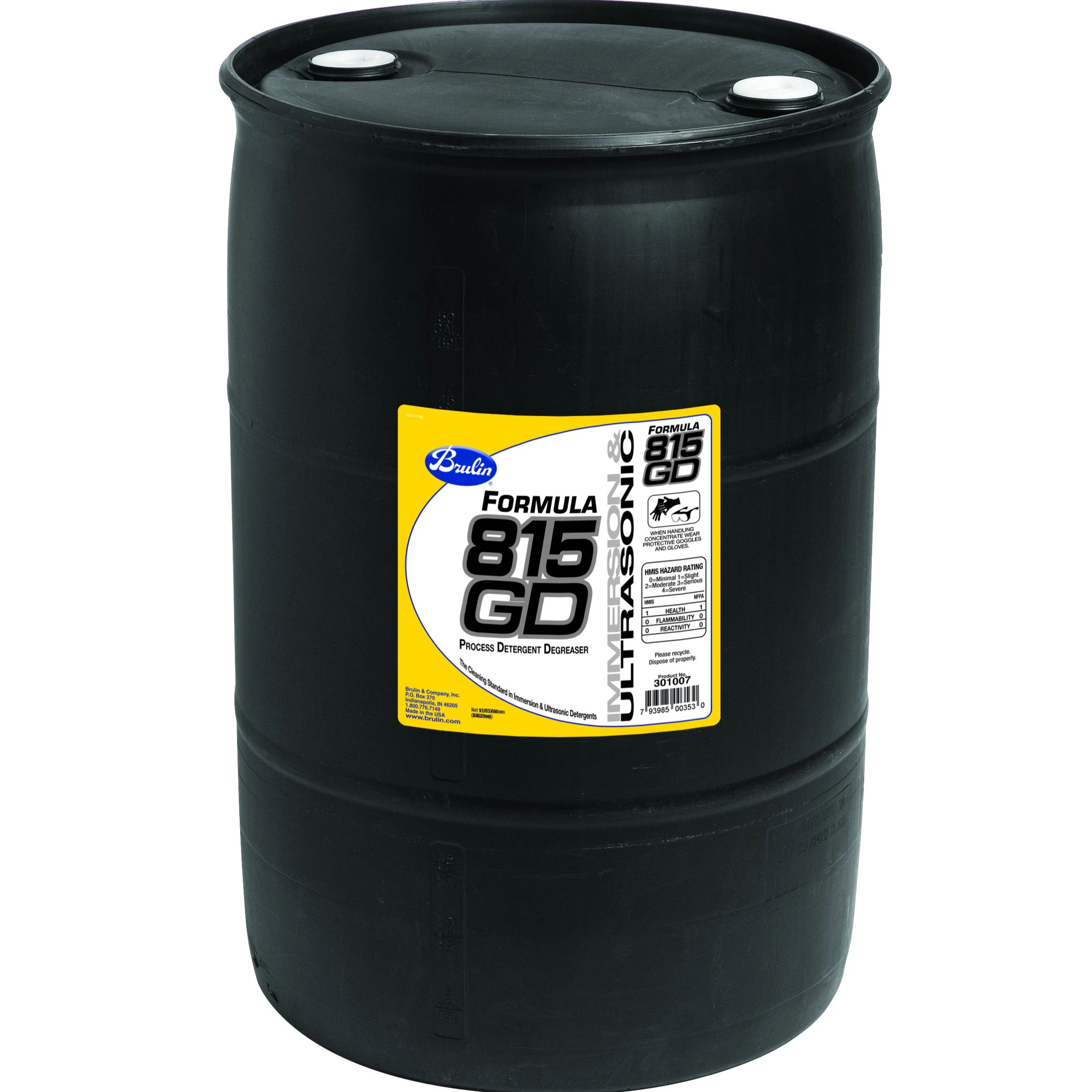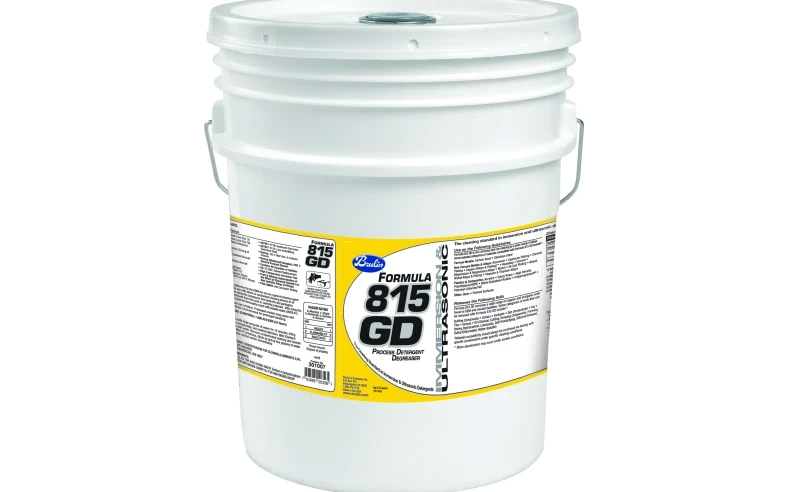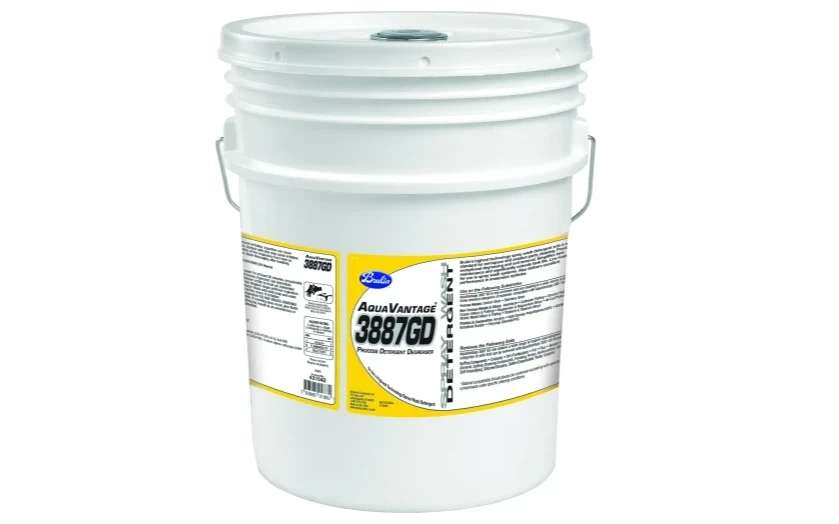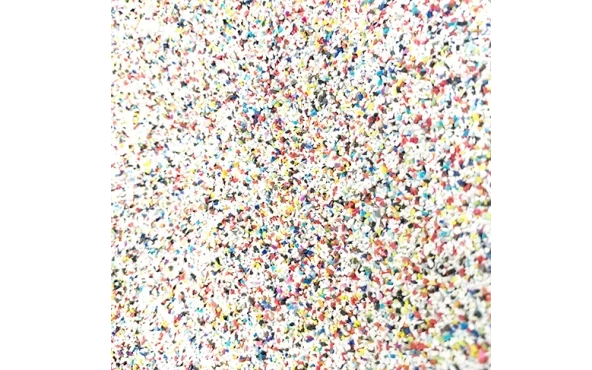description
AquaVantage® 815 GD is developed for soil removal during the manufacturing or rebuilding of precision components in immersion, mildly agitated or ultrasonic cleaning processes. Mildly alkaline solution which cavitates in ultrasonics with unparalleled performance providing a water-break-free surface. Safe on virtually all metals. AquaVantage 815 GD is noncorrosive and will not stain metals. AquaVantage 815 GD is non-corrosive and non-staining to a wide variety of alloys. Some selected categories of materials compatible with AquaVantage 815 GD include*: Ferrous Metals: Carbon Steel • Stainless Steel • Steel Non-Ferrous Metals & Alloys: Aluminum • Cadmium Plating • Chrome Plating • Copper (Alloys &Plating)** • Hastelloy • Inconel • Magnesium & Magnesium Alloys • Monel • Ni-Cad Plating • Nickel • Nickel Alloys & Plating • Titanium & Titanium Alloys Plastics & Composites: Acrylics • Epoxy Resin • High Density Polyethylene/HDPE • Nitrile Butadiene Rubber • Polypropylene/PP • Polyvinyl Chloride/PVC Other: Glass • Painted Surfaces AquaVantage 815 GD removes a wide range of organic and inorganic soils. Some categories of soils that can be removed with AquaVantage 815 GD include*: Buffing Compounds • Carbon • Coolants • Dirt (Particulate) • Fat, Flux • Grease • Inks • Oil (General, Cutting, Drawing Compounds, Forming, Honey, Hydrocarbon, Lubricants, Self- Emulsifying, Silicone/Greases, Sulfur/Chlorinated, Water-Soluble) *Material compatibility should always be confrmed via testing with specifc contaminants under specifc cleaning conditions. **Minor discoloration may occur under certain conditions.
features
- RoHS Compliant
- Extends Bath Life – Reduces Costs
- In-Process Corrosion Control
- Transmits Ultrasonic Cavitation at All Temperatures – Signifcantly Improved Soil Removal
- Free Rinsing – Permits Improved Adhesion
- Reduced Cleaning Rework & Rejects
- Separates Oil Effectively for Improved Oil Removal
applications
- Ferrous Metals: Carbon Steel • Stainless Steel • Steel
- Non-Ferrous Metals & Alloys: Aluminum • Cadmium Plating • Chrome Plating • Copper (Alloys &Plating)** • Hastelloy • Inconel • Magnesium & Magnesium Alloys • Monel • Ni-Cad Plating • Nickel • Nickel Alloys & Plating • Titanium & Titanium Alloys
- Plastics & Composites: Acrylics • Epoxy Resin • High Density Polyethylene/HDPE • Nitrile Butadiene Rubber • Polypropylene/PP • Polyvinyl Chloride/PVC
- Other: Glass • Painted Surfaces
specifications
- Airbus: AIPI 09-01-003 Approved Alkaline Cleaner
- Airbus: CML, 08AKB1
- Airbus UK: ABP 8-1290; ApprovedAlkaline Cleaner
- American Eurocopter: AEC QA-DCR/10-06/01
- Boeing: BAC 5749; Alkaline Cleaning*
- Boeing: BAC 5753; Cleaning, Descaling, and Surface Preparation of Titanium and Titanium Alloys
- Boeing: BAC 5763; Emulsion Cleaning*
- Boeing: HP 9-25; Degreasing
- Boeing (McDonnell Douglas): DPM 6373
- Boeing (McDonnell Douglas): DPS 9.341-1
- Boeing (McDonnell Douglas): P.S. 12024;Cleaning, Aqueous Immersion Degreasing
- Bombardier Aerospace: BAPS 180-040; Aqueous Degreasing
- Bombardier (de Havilland): PPS 31.04, Issue 21, Aqueous Degreaser
- Ford: Tox #150887
- UTC Aerospace Systems (Rohr): ML 21304; Brake & Wheel Components
- UTC Aerospace Systems (Rohr): RMS 1533
- UTC Aerospace Systems (Rohr): RPS 17.23 Rev. AE; Metal Prep for Adhesive Bonding
- Honeywell: Component Maintenance Manual
- (Fuel controls)
- Honeywell: Standard Practices Manual
- International Aero Engines: V2500 Overhaul Processes and Consumables Index; CoMat 01-487
- Lockheed Martin: EPS G32.016
- Lockheed Martin: LMA-PG006, Rev B
- Lockheed Martin: STP-57301; Aluminum Cleaning
- Meggitt Aircraft Braking Systems - Fulflls Standard Practices Manual AP-842 (32-46-35) when used and maintained according to BHC guidance.
- National Aeronautics and Space Administration: Procedures for Cleaning of Systems and Equipment for Oxygen Service
- Northrop: C-24
- Pratt & Whitney: PMC 1437-1; PS 422 Alkali Cleaner, Immersion
- Pratt & Whitney: SPMC 184, SPOP 209 Immersion Tank (oper.1) and Spray-on/ Rinse-off Cleaning (oper. 3); SPS 184
- Rolls-Royce: CSS 204 Type A
- Rolls Royce: OMAT 1/24S
- Safran: PR-1500
- Sikorsky Aircraft (United Technologies): SS 8423 Rev 5
- SNECMA: CFM56 Manual, CP2597
- Safran Aero Engines: DMP 13-300
- ARP 1755B: Stock Loss (Cat.10)
- ASTM F-483: Total Immersion Corrosion
- ASTM F-484: Stress Crazing of Acrylic Plastics
- ASTM F-485: Unpainted Aircraft Surfaces
- ASTM F-502: Painted Aircraft Surfaces
- ASTM F-519: Hydrogen Embrittlement (Type 1c)
- ASTM F-945: Titanium Stress Corrosion (AMS 4916 & 4911 Alloys)
- ASTM F-1110: Sandwich Corrosion
- ASTM F-1111: Low-Embrittling Cadmium Plate
- Contains No Cyanides or Sulfdes
- GE Aviation: CT-882; Solvent Replacement
- PWA 36604 Rev. D: Determination of the Effect of Chemical Cleaners on Non-metallic Alloys (O-Rings)
- PWA 36604 Rev. D: Hot Corrosion Testing
availability
Can 5 Gal (19L) Drum 55 Gal (208L) Tote 275 Gal (1,041L) Bulk - up to 5,000 Gal (~19,000L)
properties
| Physical Form | Liquid |
| Color | Blue-Green |
| Odor/Fragrance | Mild |
| Viscosity | Water-thin |
| Weight | 8.96 lbs/gal (1.074 g/ml) |
| pH of Concentrate | 12.0 |
| pH of Working Solution | 11.5 |
| Flash Point (PMCC) | None to boiling |
| Foaming Tendency | Moderate to high |
| Calculated V.O.C. | 0% (0 g/l) |
| Freeze/Thaw | Reusable after thawing & remixing |






